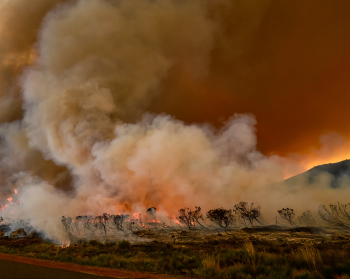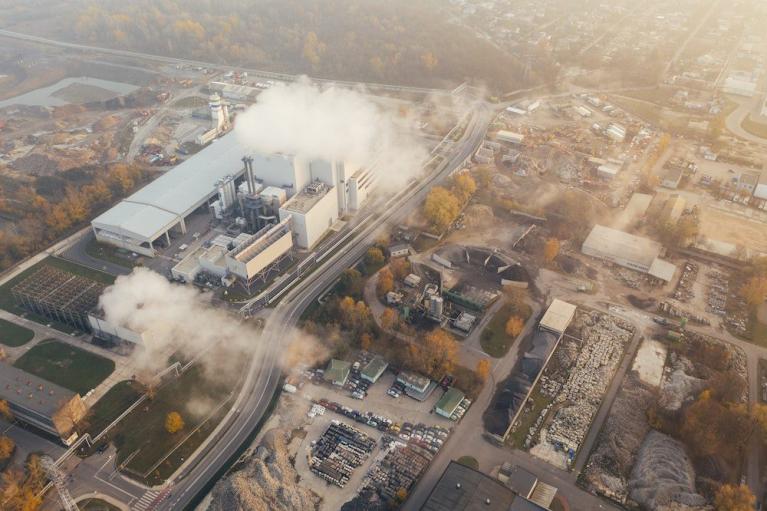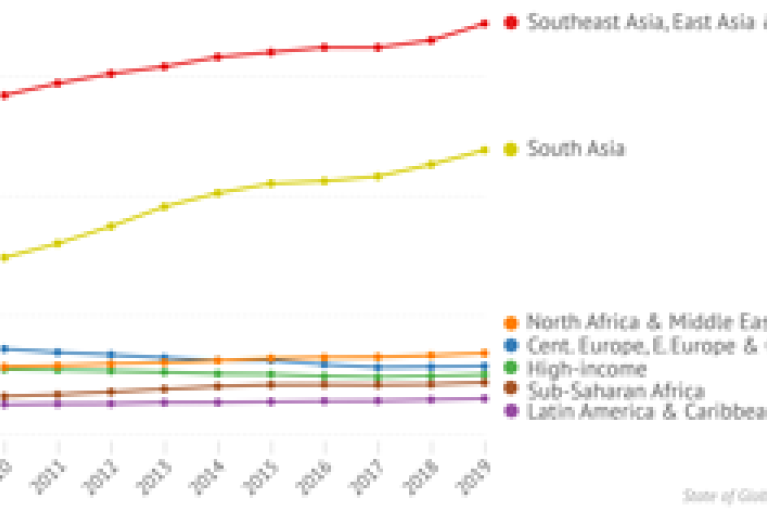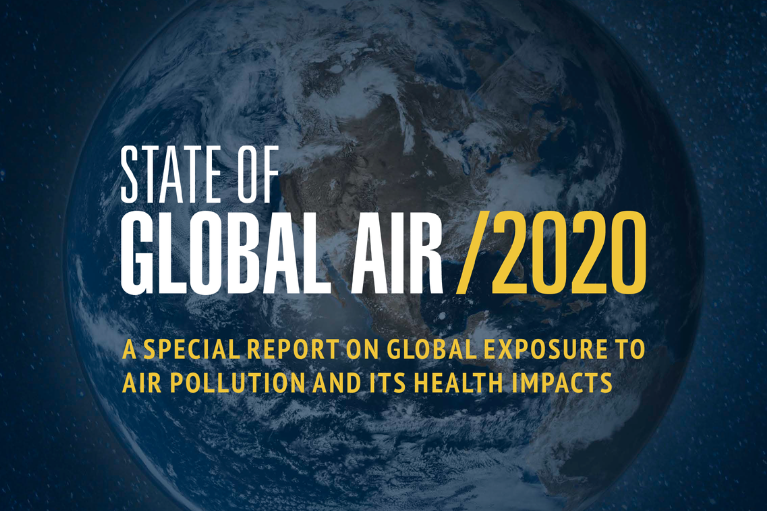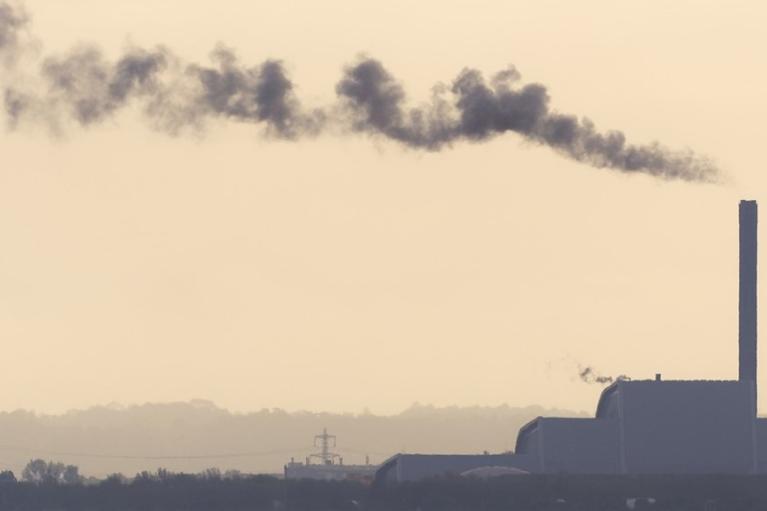About PM2.5
PM2.5, or fine-particle air pollution, consists of airborne particles measuring less than 2.5 micrometers in aerodynamic diameter, and is most often produced as a result of combustion. Breathing these particles over a long period of time can make you sick in a number of ways.
This type of pollution comes from coal and other fossil fuel burning power plants, vehicle emissions, industrial emissions, and many other human and natural sources.
Health effects of PM2.5 include ischemic heart disease, lung cancer, chronic obstructive pulmonary disease (COPD), lower respiratory infections (such as pneumonia), stroke, type 2 diabetes, and adverse birth outcomes. Learn more about the health effects of air pollution, including PM2.5.
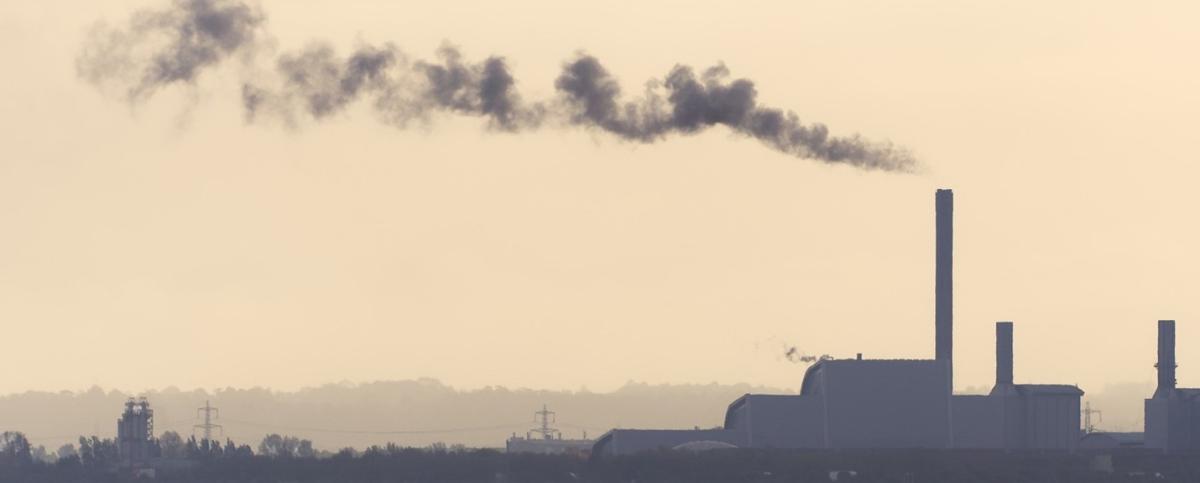
Why it Matters
99% of people on Earth are exposed to levels of PM2.5 pollution above the recommended WHO guideline levels). In 2019, PM2.5 pollution contributed to 4.14 million deaths worldwide. That number is on the rise, growing by about 23% from 2010 to 2019.
Understanding — and reducing — PM2.5 pollution matters because human lives matter. On a national and global scale, air pollution imposes a serious burden on society and limits opportunities for economic growth.
Fortunately, it is possible to reduce PM2.5 pollution. Transitioning to cleaner energy, strategies to reduce industrial emissions, and efforts to reduce transportation-related pollution can improve air quality. Similarly, a shift to sustainable agricultural practices and improved solid waste management reduce PM2.5 emissions from open burning of crop residues and household waste.

PM2.5 Trends
The good news is that globally, PM2.5 levels declined slightly from 2010 to 2019. The most notable improvements occurred in Southeast Asia, East Asia, and Oceania, driven largely by air quality improvements in China. However, other regions, like Africa and the Middle East, have seen PM2.5 worsen. In South Asia, PM2.5 has remained persistently high.
Despite a slight overall decline in PM2.5 exposures, the global health impacts from PM2.5 are rising, with especially steep increases in Asia. Globally, deaths from PM2.5 exposure increased by about 23% from 2010 to 2019, even as PM2.5 exposure decreased. Two trends explain why. First, populations are growing fastest in regions with more pollution. Second, the global population is aging. Aging populations face worse impacts because older people are more vulnerable to diseases linked with air pollution.
